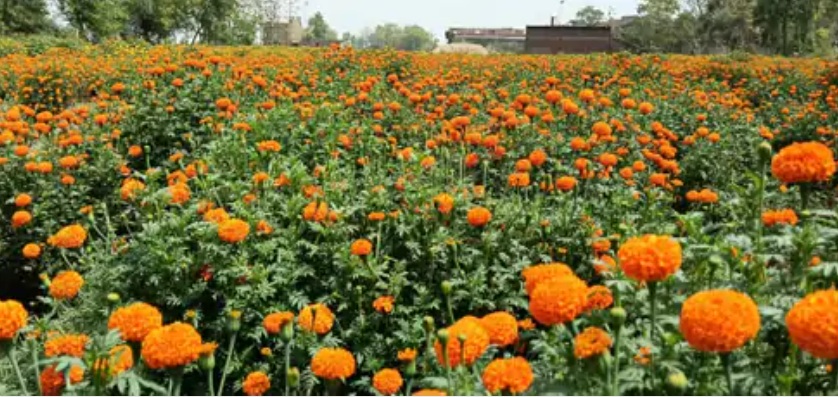Aurangabad Farmer Earns Rs 2.5 Lakh from Marigold Cultivation, Creates Jobs for 20 Locals

Aurangabad: Amid growing interest in alternative farming practices, Santosh Malakar, a farmer from Dadhpa village under Kutumba block in Aurangabad district, has emerged as an inspiring example by cultivating marigold flowers on leased land and turning it into a profitable venture.
Santosh has been involved in floriculture for the past 15 years, and this season he planted marigold on five bighas of land leased from farmers in Chilhaki village. By investing ₹1.25 lakh, he is now earning ₹2.5 lakh — double his investment — and providing employment to 15–20 local laborers.
From Bengal to Bihar: Marigold Plants Sourced from Kolkata
To ensure high yield, Santosh procured marigold saplings from Kolkata at ₹2 per plant. He mentioned that each batch of 1,000 plants cost him ₹600, as local infrastructure to grow saplings is lacking. The leased land cost him ₹15,000 per bigha, which he says is a worthwhile investment given the returns.
The vibrant yellow and orange blooms in his fields near Amba-Nabinagar road have become a local attraction, drawing comparisons to the picturesque valleys of Kashmir.
Retail Outlet and Wedding Decoration Business
Capitalizing on local demand, Santosh has also opened a flower shop near his farm, selling marigold at ₹250 per kori (20 larchha) or ₹60 per kg. He previously relied on Bengal markets for flowers used in wedding decorations, including groom’s car, stage, and jaimala setups. High transportation costs and flower prices had reduced his profit margin. Now, with home-grown marigolds, Santosh not only does decoration work at lower costs but also earns more.
Flowers Travel to Jharkhand and Uttar Pradesh
Santosh’s flowers are in demand across Bihar, Jharkhand, and eastern Uttar Pradesh. Traders from Hariharganj, Daltonganj, Chhatarpur, Japla (Jharkhand) and Nabinagar, Amba, Barun, Dev, Aurangabad (Bihar) purchase flowers from his farm regularly.
He estimates that each bigha requires ₹25,000 in cultivation costs, and with favorable weather this season, he anticipates better profits.
Call for Government Support in Floriculture
Despite his success, Santosh expressed concerns about the lack of government support for flower cultivation. Unlike medicinal farming, floriculture gets little attention. He has yet to receive any benefit from the Horticulture Department, and notes the absence of polyhouses, timely financial assistance, and organic fertilizers as major challenges.
Other villagers — Kishori Malakar, Rahul Malakar, and Sunil Malakar — are also cultivating flowers and echo similar concerns. They urge the government to promote floriculture as a viable source of income and support the cultivation of roses, mogra, and chrysanthemums, which currently must be sourced from outside the state.
Department Responds: Subsidy Available on Application
When contacted, District Horticulture Officer Dr. Srikant said, “There is a provision of subsidy on flower cultivation, but farmers need to apply through proper channels. The department provides assistance based on applications. Regular contact with the department can help farmers avail the benefits.”
As flower cultivation gains ground in Aurangabad, farmers like Santosh Malakar are proving that innovative farming practices can generate income, create rural jobs, and reduce dependency on traditional crops — provided that government support mechanisms are streamlined and made accessible.






